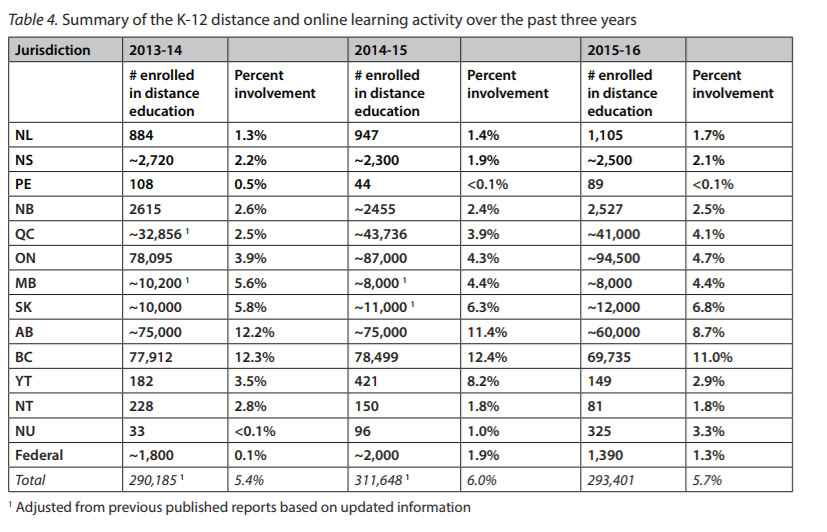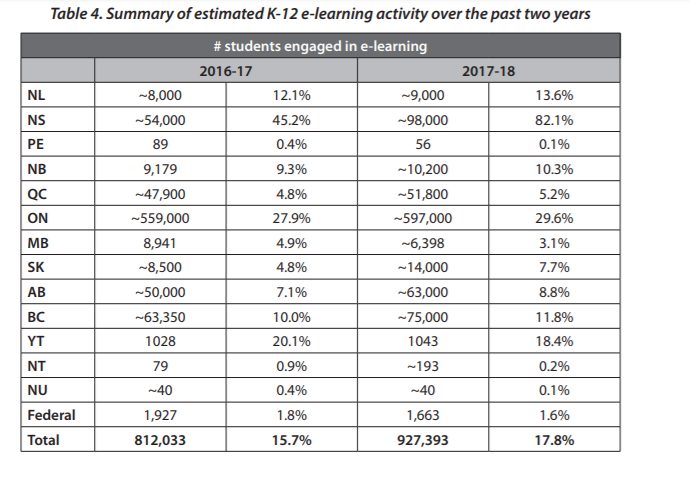Introduction
Education is always important. Passing on our wisdom generation by generation is the duty for any qualified human-being for the sake of continuing our civilization. One might wonder, “how much education is enough?”, The cliche answer is probably “It’s never enough”. K-12, “a term used in education and educational technology in the United States, Canada, and possibly other countries, is a short form for the publicly-supported school grades prior to college. These grades are kindergarten (K) and the 1st through the 12th grade (1-12)” (WhatIs) [1], is usually the level of education many societies expect its people to have as before working full-time . The world literacy has been increasing steadily in the past couple of centuries. Whether or not if one should pursue a post-secondary degree is a personal choice. However, people generally think the higher the better. As our fundamental education, using an efficient and well-designed education system is extremely important in every society.

Image 1
[2]https://ourworldindata.org/literacy
As the modern technology continue to shape our society in every aspect, we need to realize the necessity of integrating more technology into our education system to make the best use of it and help students learn more effectively. The changes that are happening in the world brought by the fast growing technology is so tremendous that while we enjoy the convenience we also need to stay utterly alert to prevent the potential damage caused by the misuse of technology. In this research paper I will present you the current state of online education in Canada and compare the pros and cons of online education compared to traditional education.
Current State of K-12 E-Learning in Canada
Here is a definition of distributed learning by K-12 E-Learning in Canada “Under the current policy, the delivery method is considered distributed learning as long as the student is at a distance from the teacher for the “majority of the time,” which is not explicitly defined. The current funding model in British Columbia does not differentiate between distributed learning and blended learning or between face-to-face and blended learning. However, there are different funding amounts for face-to-face courses and programs, as compared to distributed learning courses.” [3]
Here we can see that the trend in K-12 online education in Canada is steadily increasing.

Image13-16
[3]https://k12sotn.ca/wp-content/uploads/2016/12/StateNation16.pdf

Image16-18
[3]https://k12sotn.ca/wp-content/uploads/2019/01/StateNation18.pdf
Here is an image of the distribution of K12 online across canada, Students from all thirteen provinces and territories participate in K-12 distance, online, and blended learning opportunities. We can see that less populous area can also have access to online education in more developed area.

Image 4
[3]https://k12sotn.ca/wp-content/uploads/2019/01/StateNation18.pdf
Why Online?
Like every other thing online education is a double edge-sword too To use it or to avoid it depends on which edge weights more.
It is cheaper to attend online school “During the 2017-18 school year, the basic allocation school-age equivalent (i.e., FTE) for students attending a brick-and-mortar school was $7,301 (or $-912.62/course), while only $6,100 (or $-762.509/course) for a student attending a distributed learning school.” [4] It is easy to imagine online school being more affordable since you do not pay rent for the facilities and spend on commutes like convention schools.
Online course has less retention rate “ The Research Institute of America have found that this is not the case with eLearning. Rather, online courses have increased student retention rates from anything from 25% to 60%.” [4] For those who attend online schools, theirs parents tend to pay more attention to how their kids do at “school” since they know their kids are not on a traditional path so they need to take on the role as a supervisor a little more than usual.
Less time investment is needed for online school “A Brandon Hall report on eLearning within corporations found that this style of learning typically requires 40-60% less employee time than learning in a traditional classroom setting.” [4] Instead of going to a school and meet up with each other, online school students only requires faculties and students to have a steady access to the internet. For someone with a disability it is made possible for them to attend school.
Learning and teaching online is greener too “The Open University in Britain have found that online courses equate to an average of 90% less energy and 85% fewer CO2 emissions per student than traditional in person courses.”[4] Using facilities in a traditional school costs electricity, construction materials, water,etc.
Why Not?
Now let’s hear some voices criticizing online school. According to Consumeraffairs, “I was put into K12 in 8th grade after 7 years of public schooling. It completely ruined me. I became very lonely and depressed which also led me to gain anger issues.” “Please do not attend K12 schooling. My daughter went for a year & she was constantly swamped with work. The teachers barely teach anything. There are always problem with it. The teachers never answer direct questions as well as threatening to kick my daughter out because of missing 1 day.” “In home school (K12) isn’t the best one to put a child in. It’s stressful. The outings are once in a blue moon. My teachers are nice but they get mad quickly if you don’t participate. Also you have to be sitting or they will put you in a “zzz” room or they will kick you out. LOTS OF EMAILS. Homework is a lot.” [5]

Image 5
https://www.capterra.com/p/111592/K-12-Online/#reviews [6]
The concerns regarding online school are of reasons including loneliness, difficulties in assignment, irresponsible instructors, etc. All of which, more or less, could happen to students in conventional schools too. Below are some disadvantages exclusive to learning online.
Learning online can cause worsen eyesight due to constant focus on the computer screen. Students do not get to practice speaking skill since most interactions are through typing. It also requires students to have high self-discipline and motivation because teachers are not present physically to lecture. While constantly on phones and laptops, you are easily distracted by entertainments like social media and games. Also while having your personal information online, you are more prone to to online scams and frauds. Online school is not immune to bullying, in fact people can post hateful comments and not see the negative emotion it causes shown on people’s faces.
“Online education has failed to reduce costs and improve outcomes for students,” according to a new report [7] Online education is the fastest-growing segment of higher education and its growth is overrepresented in the for-profit sector; Faculty and academic leaders, employers and the general public are skeptical about the quality and value of online education, which they view as inferior to face-to-face education; Students in online education, particularly underprepared and disadvantaged students, underperform and on average experience poor outcomes;Online education has failed to improve affordability, frequently costs more than in-person alternatives and does not produce a positive return on investment;Regular and substantive student-instructor interactivity is a key determinant of quality in online education, leading to improved student satisfaction and learning outcomes.[7]
The sense of community created by bricks and mortar schools can hardly be reproduced by online school. It is an important stage during which immature students meet each other and pick up the social cues. Students can make more friends going to a traditional school by attending all sorts of clubs and parties organized by schools and student leaders. For thousands of years people go to schools before entering the society. It is crucial for young people to experience different places, meet different people and learn to live independently.
The brick and mortar school will continue to exist for a long period of time. Schools usually bring up the local economy. Housing prices, coffee shops, print shops and many more depend on the Eco-system created around schools. Replacing them with online school could easily destroy the local economy.
Conclusion
In the beginning of the paper I present you the current state and a general trend of of online learning for K-12 in Canada. We can see that the popularization of online courses is on its way, though still it accounts for less than half the total students population in many provinces. Online courses offer less populous and developed areas an access to higher quality education offered in developed places. Though online education will not completely replace the traditional education in the near future, it will take on a more and more important role. In the future there will be more technology that enables learning online to be more similar to conventional school. For example, augmented reality, through which people can see the teacher and classmates in person therefore creates a real world like class. We need to utilize the technology and integrate them into our education system hence we have the blended education, having both the characteristics of online schools and traditional schools to counteract the negative effect and keep the advantages of both systems. It is not a question about which is better. Different students have different needs and the decision is on them as long as there are options like online school, traditional school and blended style school available.
Learning Pod feedback
My partner Daniel Wu and I have always got along in discussing the assignment and sharing thoughts. We would point out each other’s mistakes in the assignment and add on our own perspective. We messaged each other regularly to keep in touch and even met up at campus to hang out. I think having study partners is beneficial for online courses for students are otherwise on their own. One suggestion is that I would appreciate switching learning partners more often so we can make more friends and learn from more perspectives.
Reference
[1] WhatIs, https://whatis.techtarget.com/definition/K-12, 2019
[2] Max Roser and Esteban Ortiz-Ospina,Literacy, https://ourworldindata.org/literacy , 2019
[3] State of the Nation, K-12 E-Learning in Canada, https://k12sotn.ca/bc/, 2019
[4]CAE Computer Aided USA, 5 Reasons Why Online Learning is More Effective
https://www.dexway.com/5-reasons-why-online-learning-is-more-effective/ ,2019
[5]ConsumerAffairs, https://www.consumeraffairs.com/education/k12-inc.html?#sort=top_reviews&filter=none ,2019
[6]Capterra, K12 Online Review,
https://www.capterra.com/p/111592/K-12-Online/#reviews
[7]Paul Fain, Takedown of Online Education
Leave a Reply